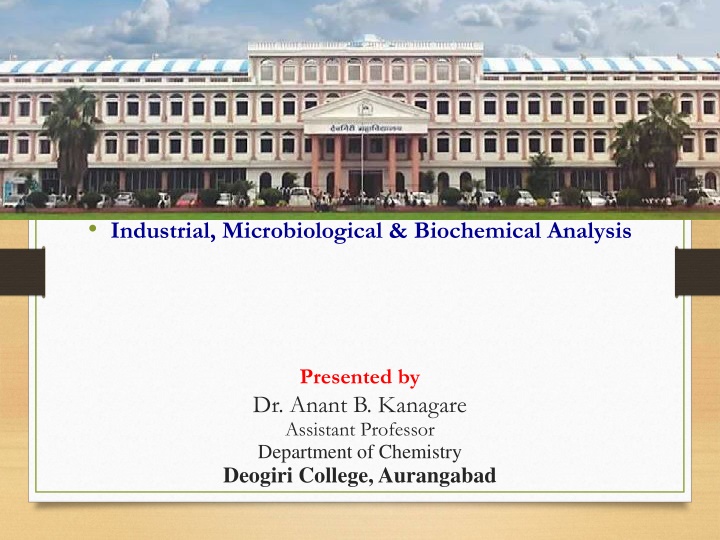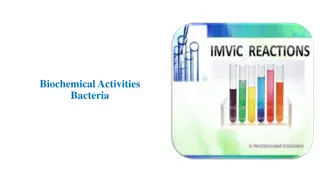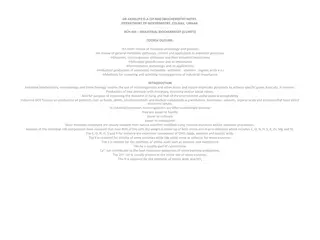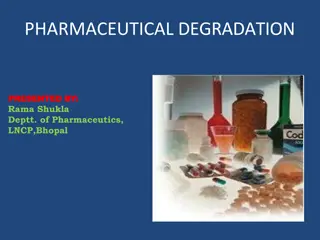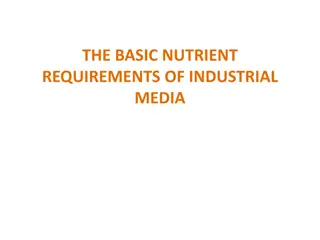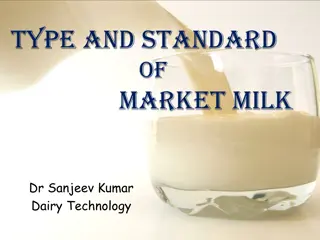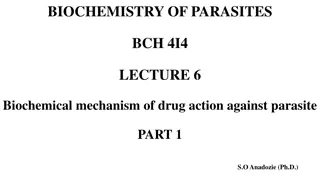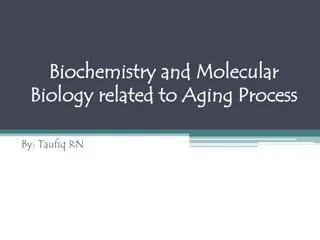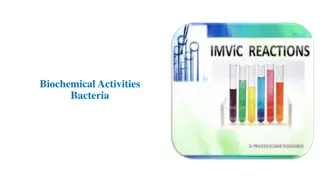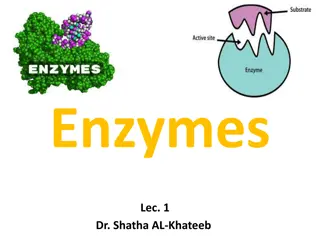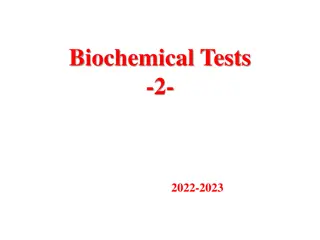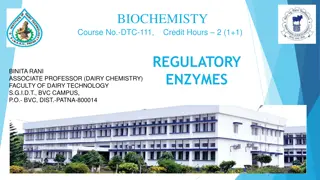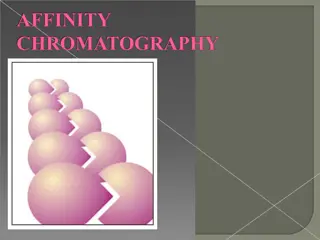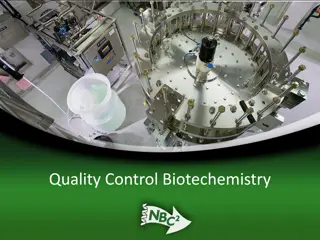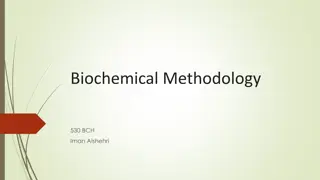Industrial, Microbiological & Biochemical Analysis - Course Overview by Dr. Anant B. Kanagare
Dr. Anant B. Kanagare, an Assistant Professor at Deogiri College, Aurangabad, presents a comprehensive course on Industrial, Microbiological, and Biochemical Analysis (Course Code ACH502). The course covers topics such as Industrial Analysis, Microbiological Analysis, and Biochemical Analysis. Dr. Kanagare, with a background in polymer synthesis, nanomaterial synthesis, and waste water system engineering, guides students through various aspects of analysis techniques, including microscopy, spectroscopy, protein analysis, carbohydrate analysis, and more.
Download Presentation

Please find below an Image/Link to download the presentation.
The content on the website is provided AS IS for your information and personal use only. It may not be sold, licensed, or shared on other websites without obtaining consent from the author.If you encounter any issues during the download, it is possible that the publisher has removed the file from their server.
You are allowed to download the files provided on this website for personal or commercial use, subject to the condition that they are used lawfully. All files are the property of their respective owners.
The content on the website is provided AS IS for your information and personal use only. It may not be sold, licensed, or shared on other websites without obtaining consent from the author.
E N D
Presentation Transcript
Industrial, Microbiological & Biochemical Analysis Presented by Dr. Anant B. Kanagare Assistant Professor Department of Chemistry Deogiri College, Aurangabad
Course Code ACH502 Paper No. XVI Industrial, Microbiological & Biochemical Analysis Course Instructor : Dr. Anant B. Kanagare
Who Am I! Completed PhD from BARC, Trombay, Mumbai Formerly Assistant Professor, School of Chemical Engineering, MITAOE, Pune. Assistant Aurangabad Professor, Department of Chemistry, Deogiri College, Associated as a faculty since 2018 with MITAOE I teach courses / guide the projects related to Polymer synthesis, Nanomaterial Synthesis, Recycling, and Waste Water System Engineering
Course Code ACH502 Paper No. XVI COURSE SYLLABI (2020 - 2021) Unit1. Industrial Analysis Unit2. Microbiological analysis Unit3. Biochemical analysis:
Unit 15 Industrial Analysis Hours I a) Paints: Definition, constituents & their functions, flash point of paint, separation of pigments, binder & thinner analysis of vehicle and thinner. b) Pigments: General outline of identifications & analysis of pigments organic & inorganic pigments, their qualitative chemical test, analysis of white and tinted pigments. c) Pesticides: Definition & classification of pesticides, analysis of the following in outline, DDT, Malathione, Diagionon. d) Analysis of alloys: Composition and estimation of main constituents
Unit II Microbiological analysis: Microscopy principle working, components used, and care of dissecting Bright fill. Spectroscopy, calibration of ocular micrometer, measurements of cell bacterial by counting chamber, by plate count and by spectrophotometer. Preparation of bacterial and blood smear staining of bacteria, negative staining and grams staining, sterilization techniques, moist heat, dry heat, ultraviolet radiations, chemical methods, filter paper, disc method, alcohol effectiveness and phenol isolation of fungi & VAM from soil (any one method), isolation & identification of bacteria, measurements of growth of microorganisms, factors affecting growth of microorganism, pH, media,
Unit 15 Biochemical analysis: Hours III a) Protein: Definition classification, determination of net protein utilization, digestibility and biological value, estimation of protein by Lowry s method, Bradford method, estimation of total free amino acid, lysine and tryptophan. b) Carbohydrates: Definition, classification, colour reactions of carbohydrates Moloch s test, iodine test, Fehling test and Benedict test, determination of total carbohydrate by Anthrone, Amylase by iodine, fructose pectic substances by colorimetry. c) Nucleic Acid: Definition, isolation and estimation of DNA & RNA d) Vitamins: Definition and physiological activity of vitamins, estimation of thioamine, riboflavin, Niacin, carotene, cyanocobalamine.
Unit I Industrial Analysis Session A Paints:
What is a Paint? Definition: Paint is a mixture of pigments suspended in a solvent. Paints are widely used in surface coatings. Plasticizers are added during the manufacturing of a paint in order to provide elasticity to the film & reduces the cracking. Composition of the paints can be easily adjusted in the process of their manufacture, depending upon the purpose for which they are required & quality of the work required.
What is paint? To most people, paint is the colour on the walls of their home, the colour of their car, bike or any object which a person can relate to in his Daily Life. Paint is just the colour through, it is a coloured substance which spread over a surface & is left to dry to leave a thin decorative, coloured & protective coating film. Higher the paint Quality Higher the preparation of base.
It is most commonly used to protect, colour, or provide texture to objects. Paint can be made or purchased in many colours & in many different types, such as water colour or synthetic. Paint is typically stored, sold, & applied as a liquid, but most types dry into a solid. Most paints are either oil-based or water-based & each have distinct characteristics.
Constituents of Paints Paints mostly contain a base & it provides the body to it. The common examples which can be used as a base in paints are: White zinc, white lead , Red lead etc. There is a carrier known as vehicle in which the base can be dissolved. Example: Water (in water paint), Linseed oil & poppy oil etc. (in oil paint) The carrier helps to the base for spreading all over
Paint is any pigmented liquid liquefiable, or solid mastic composition that, after application to a substrate in a thin layer, converts to a solid film. It is most commonly used to protect, colour, or provide texture to objects. Paint is typically stored, sold & applied as a liquid, but most types dry into a solid. Most paints are either oil-based or water-based & each have distinct characteristics.
For one, it is illegal in most municipalities to discard oil based paint down household drains or sewers. Solvents for clean up are also different for water based paint than they are for oil based paint. Water-based paints and oil-based paints will cure differently based on the outside ambient temperature of the object being painted.
Constituents Of Paints: 1. Pigments: Pigments are various inorganic or organic insoluble substances which are widely used in surface coatings. The most important properties of pigments are opacity, good covering power, mixing ability with oil, chemical inertness, non toxicity or low toxicity, high hiding power, high tinting strength and reasonable cost. They protect the film by reflecting the destructive ultra violet light, to strengthen the film
